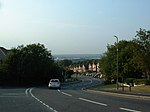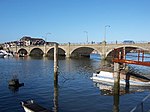The Gregg School
1901 establishments in EnglandEducational institutions established in 1901Hampshire school stubsIndependent schools in SouthamptonMember schools of the Independent Schools Association (UK) ... and 2 more
People educated at The Gregg SchoolUse British English from February 2023

The Gregg School is a non-selective independent secondary day school for boys and girls in Townhill Park, Southampton, Hampshire, UK, with an associated kindergarten and primary school, the Gregg Preparatory School, near Southampton Common. The main school occupies Townhill Park House and its grounds. It was founded in Southampton in 1901 and has more than 300 pupils and staff. The Gregg School is not a fully academically selective school. Selection is made through an entry assessment and references from the student's previous school.
Excerpt from the Wikipedia article The Gregg School (License: CC BY-SA 3.0, Authors, Images).The Gregg School
Coachmans Copse, Southampton Townhill Park
Geographical coordinates (GPS) Address Nearby Places Show on map
Geographical coordinates (GPS)
| Latitude | Longitude |
|---|---|
| N 50.931 ° | E -1.358 ° |
Address
Coachmans Copse
Coachmans Copse
SO18 2RQ Southampton, Townhill Park
England, United Kingdom
Open on Google Maps








